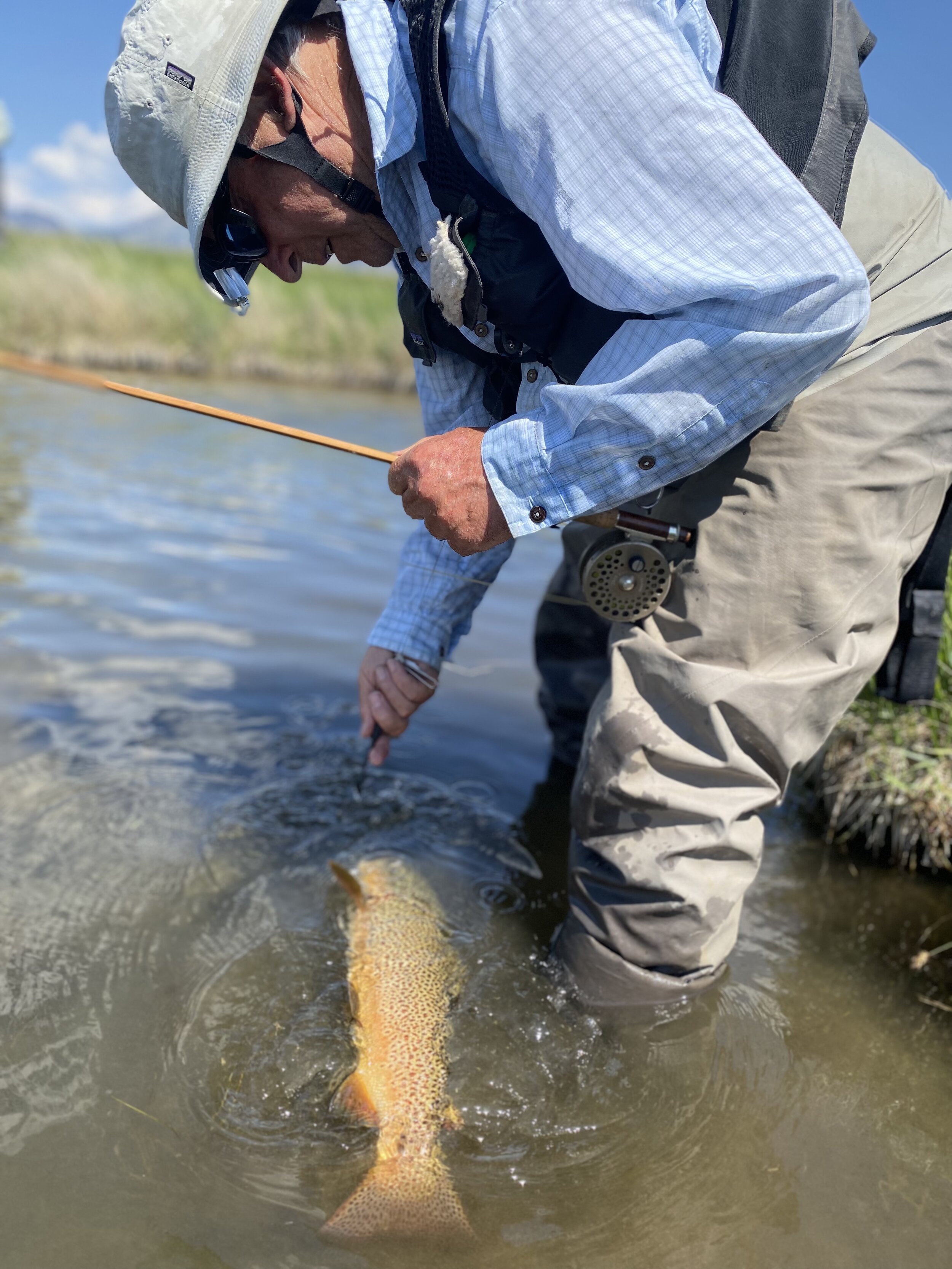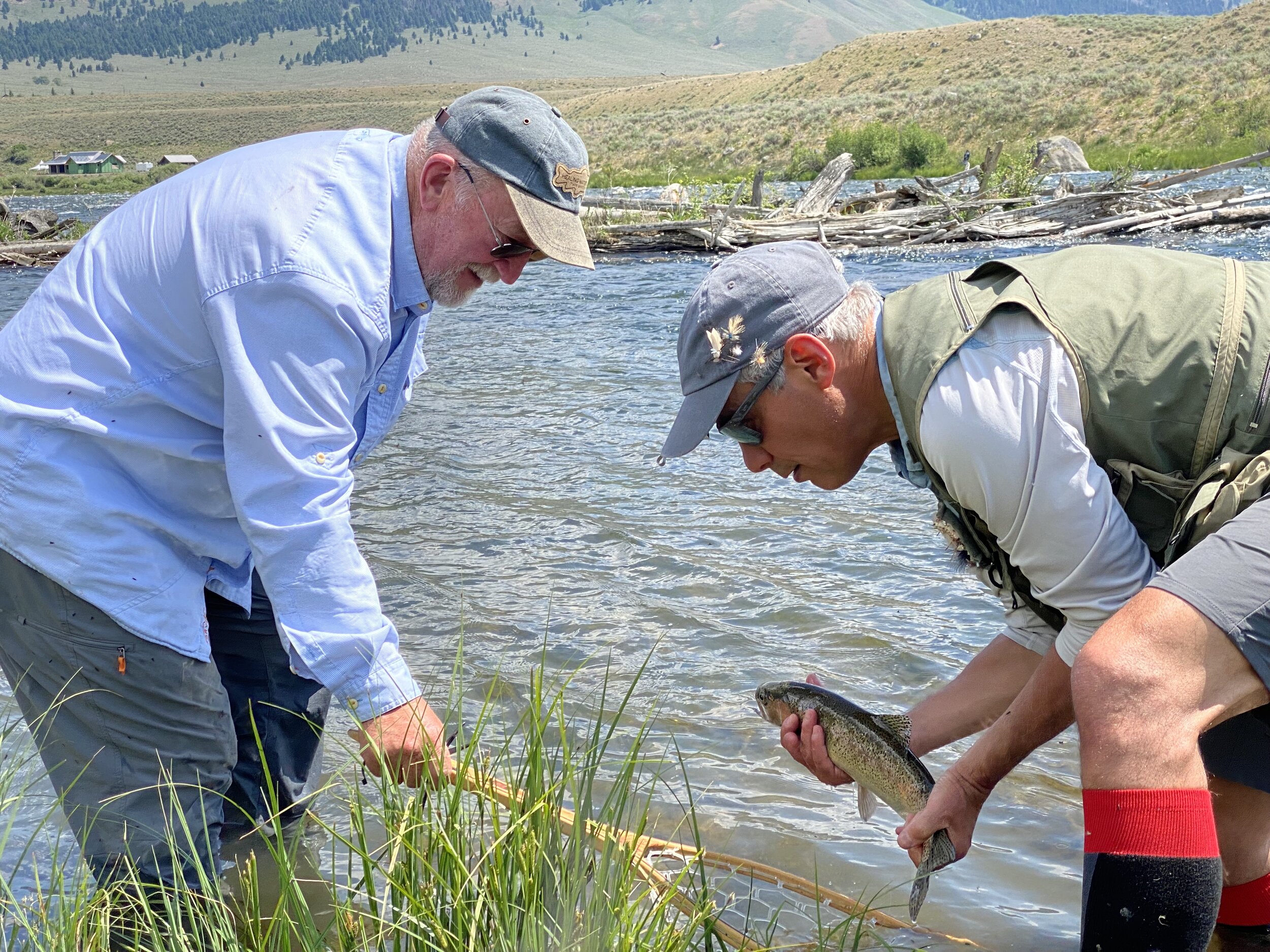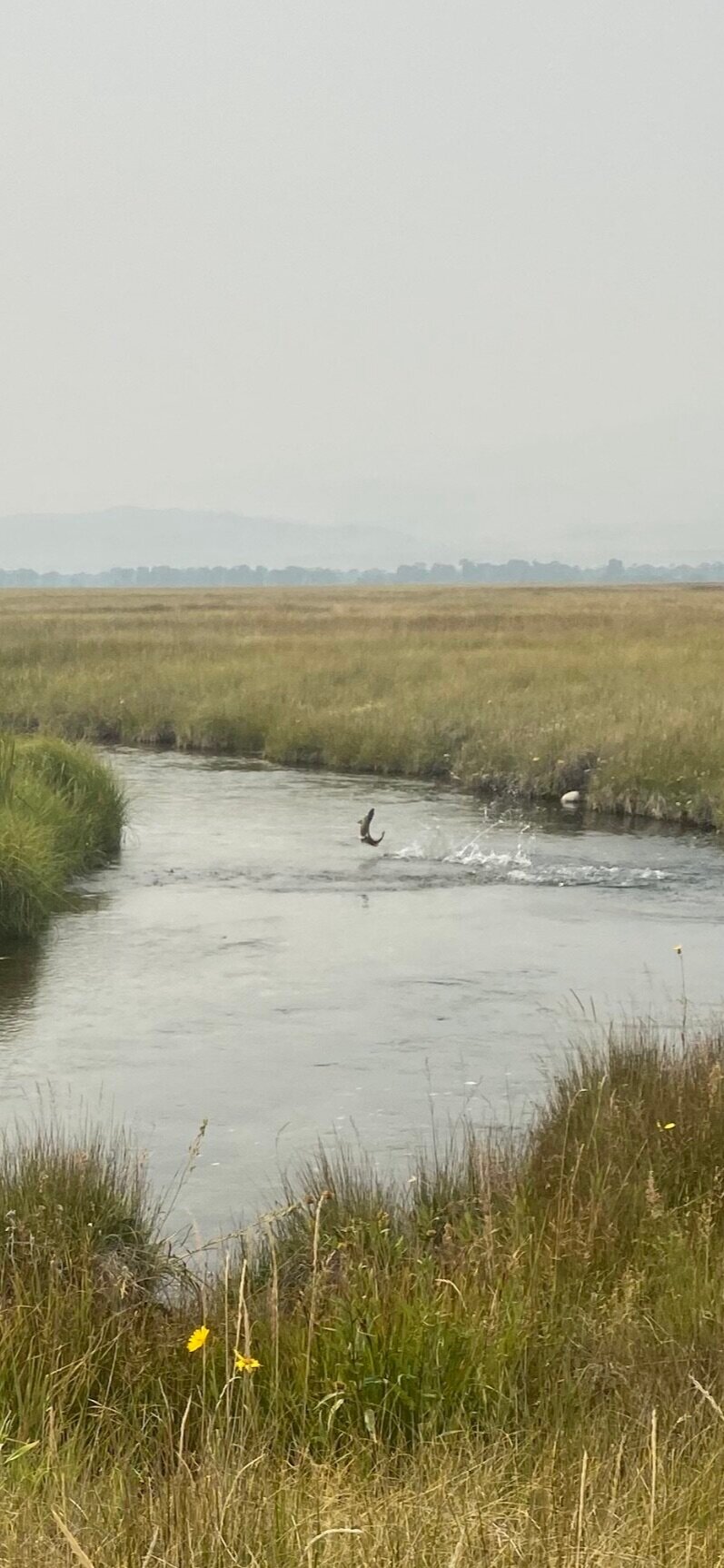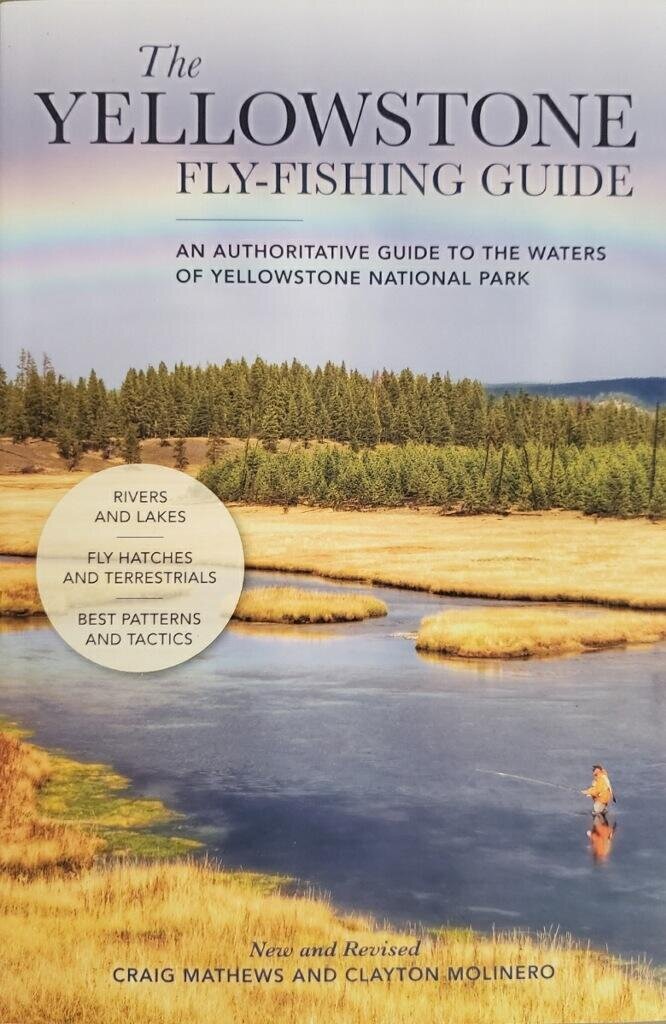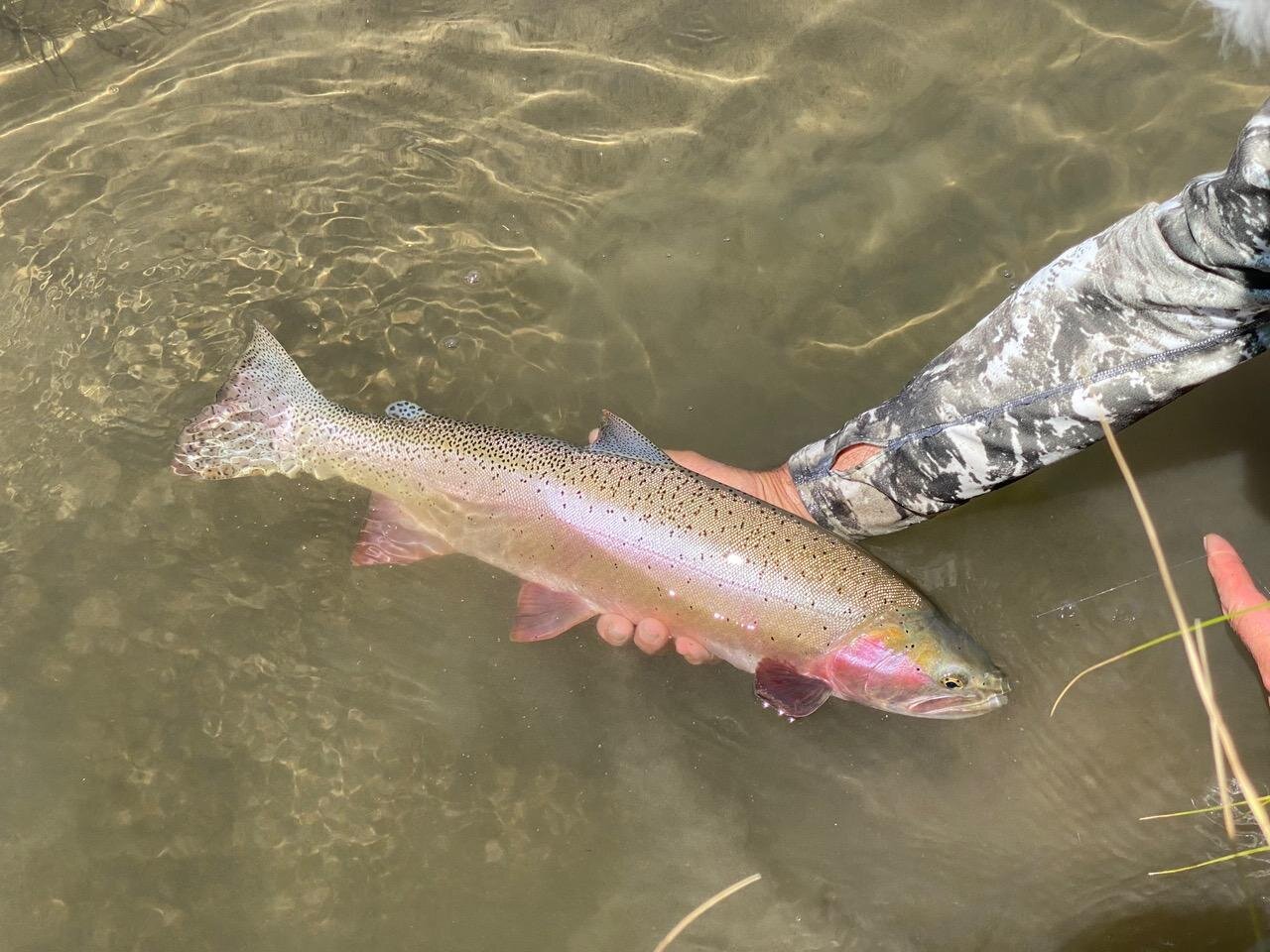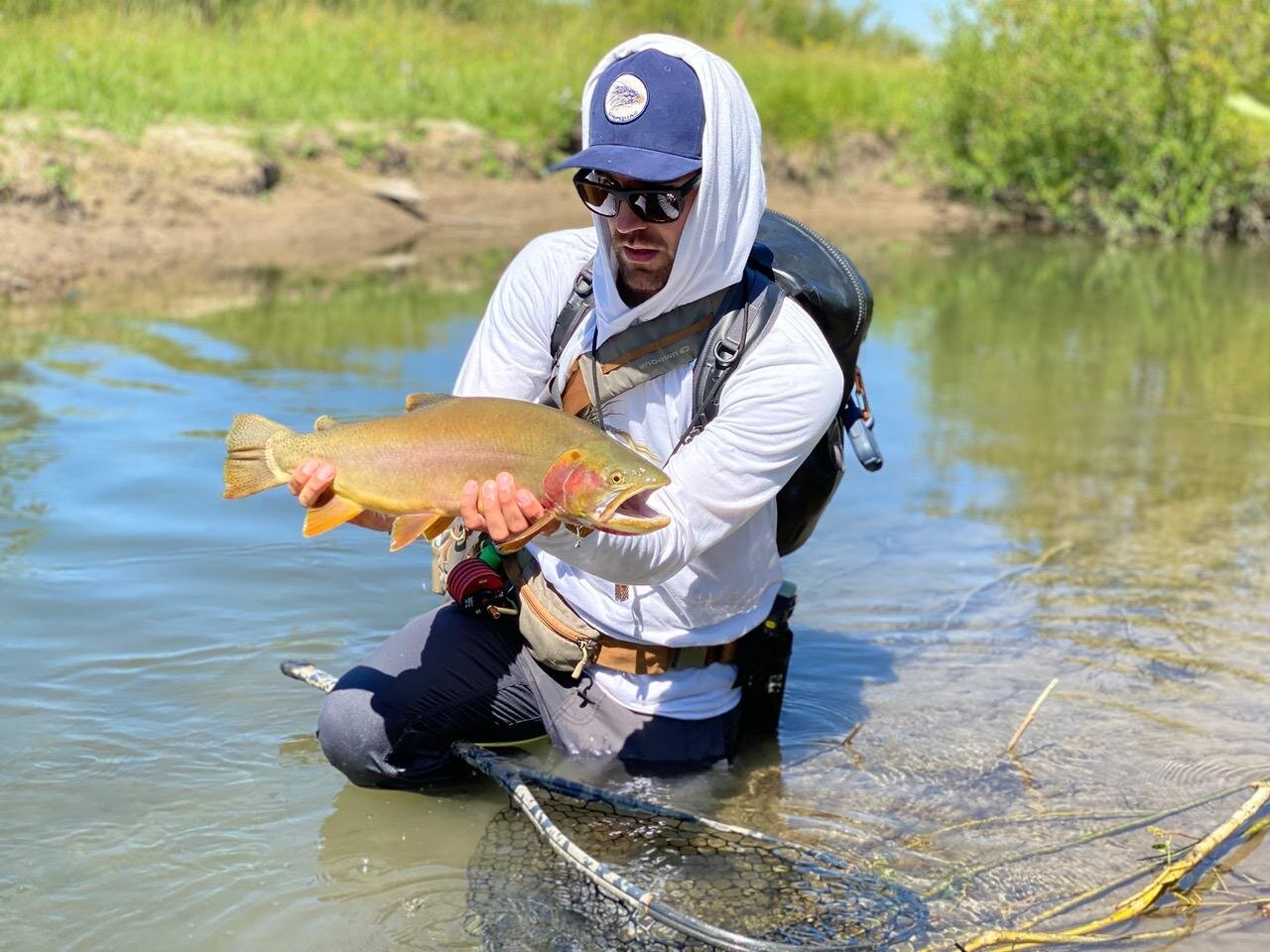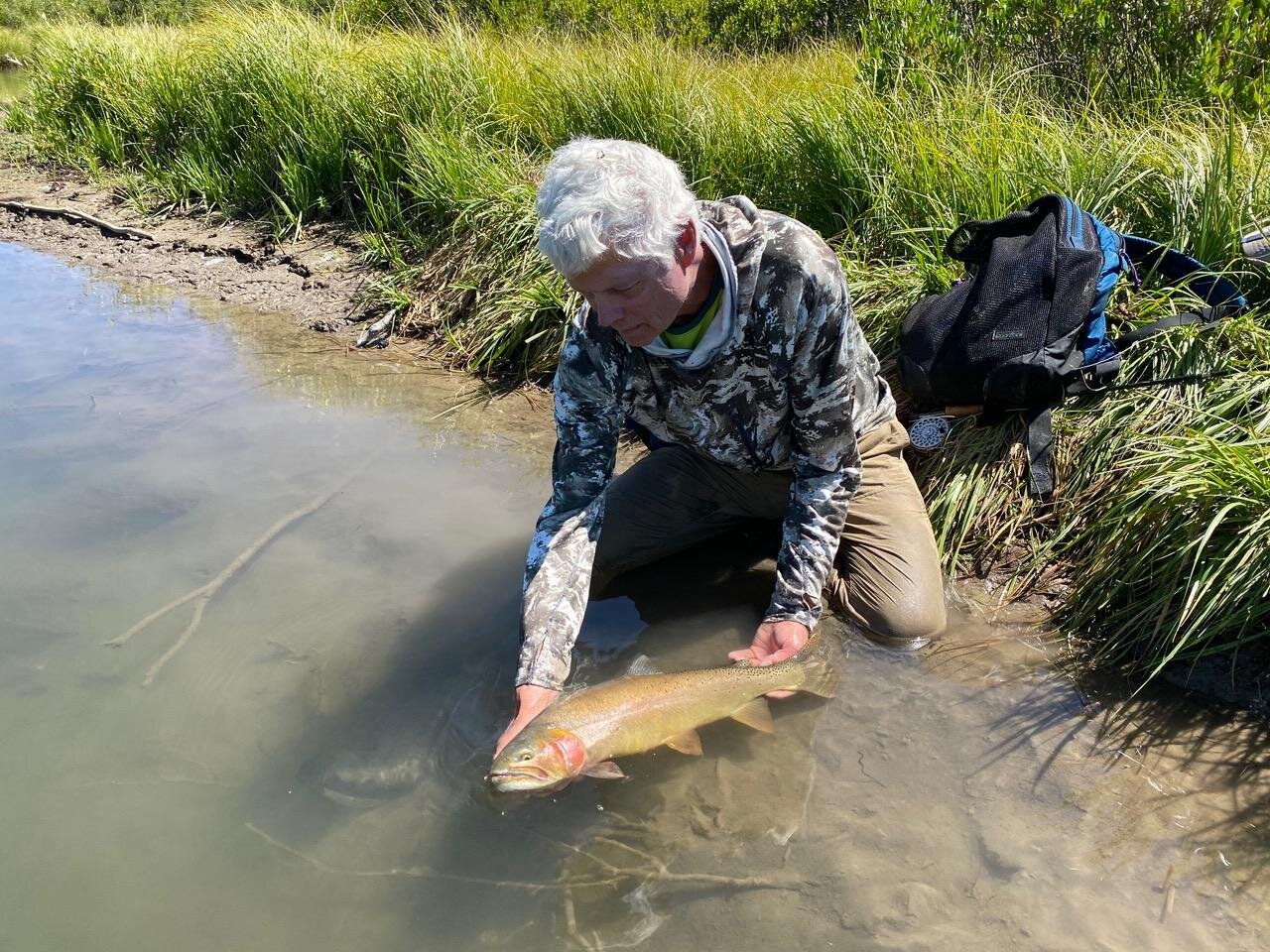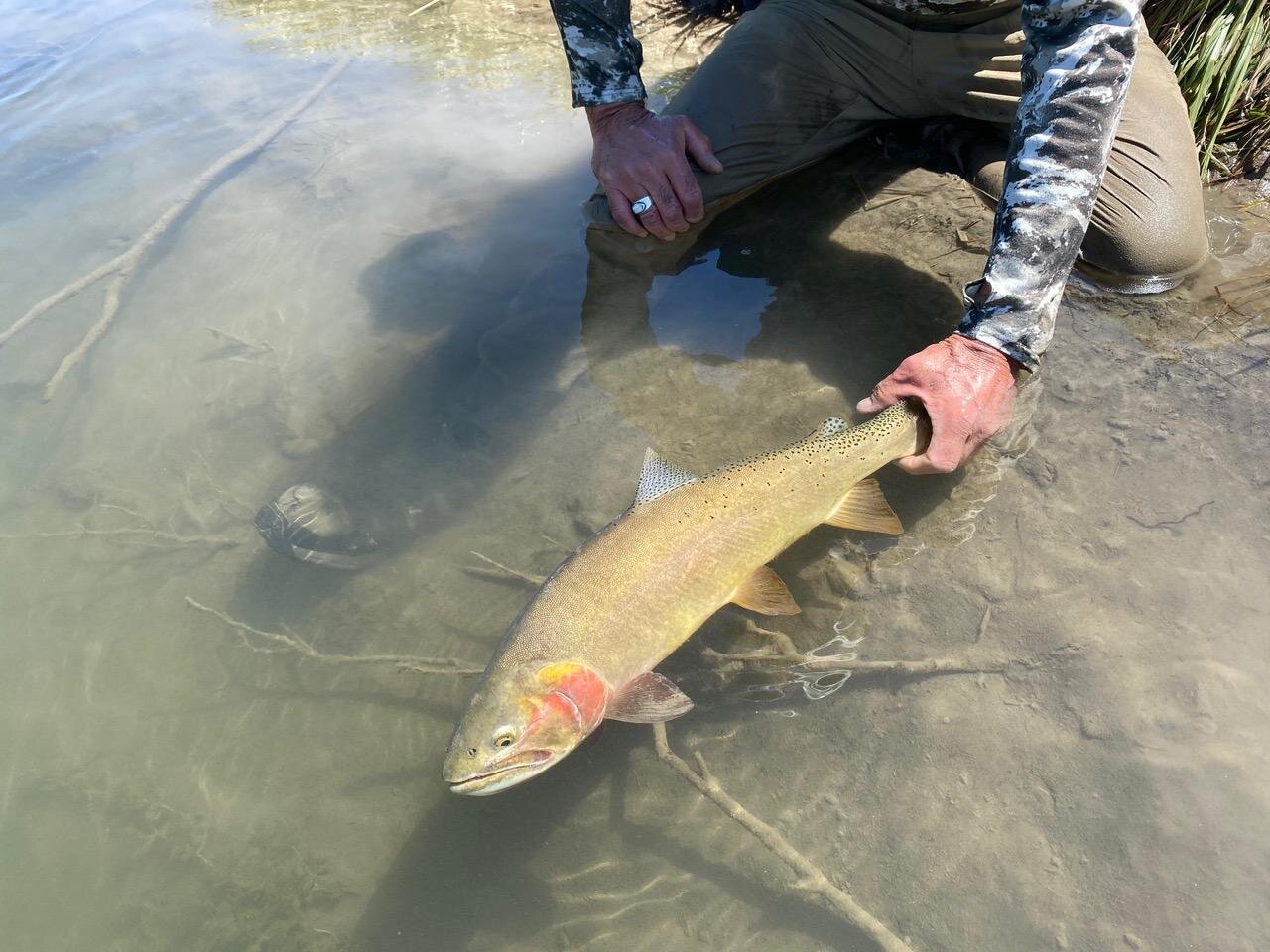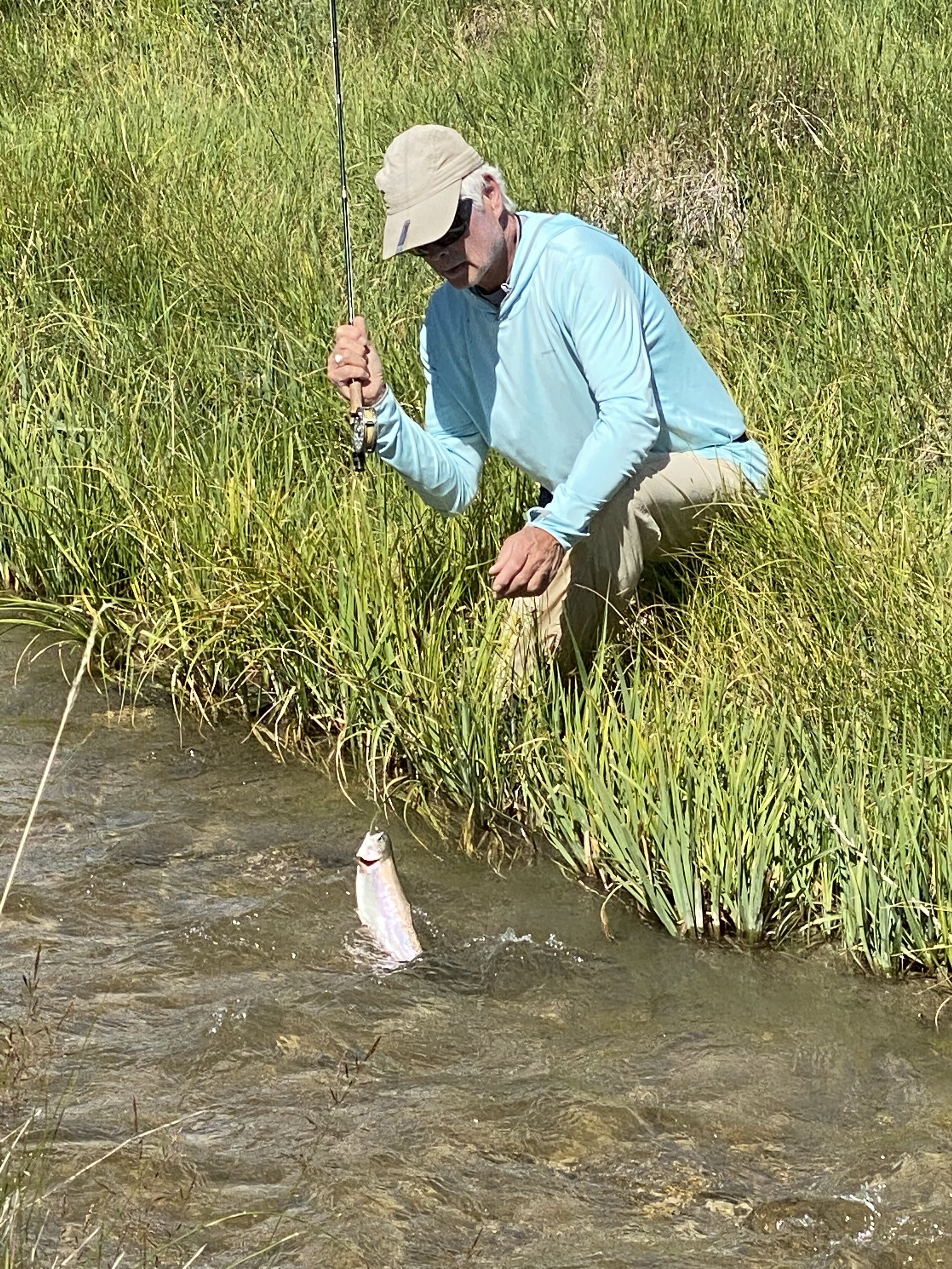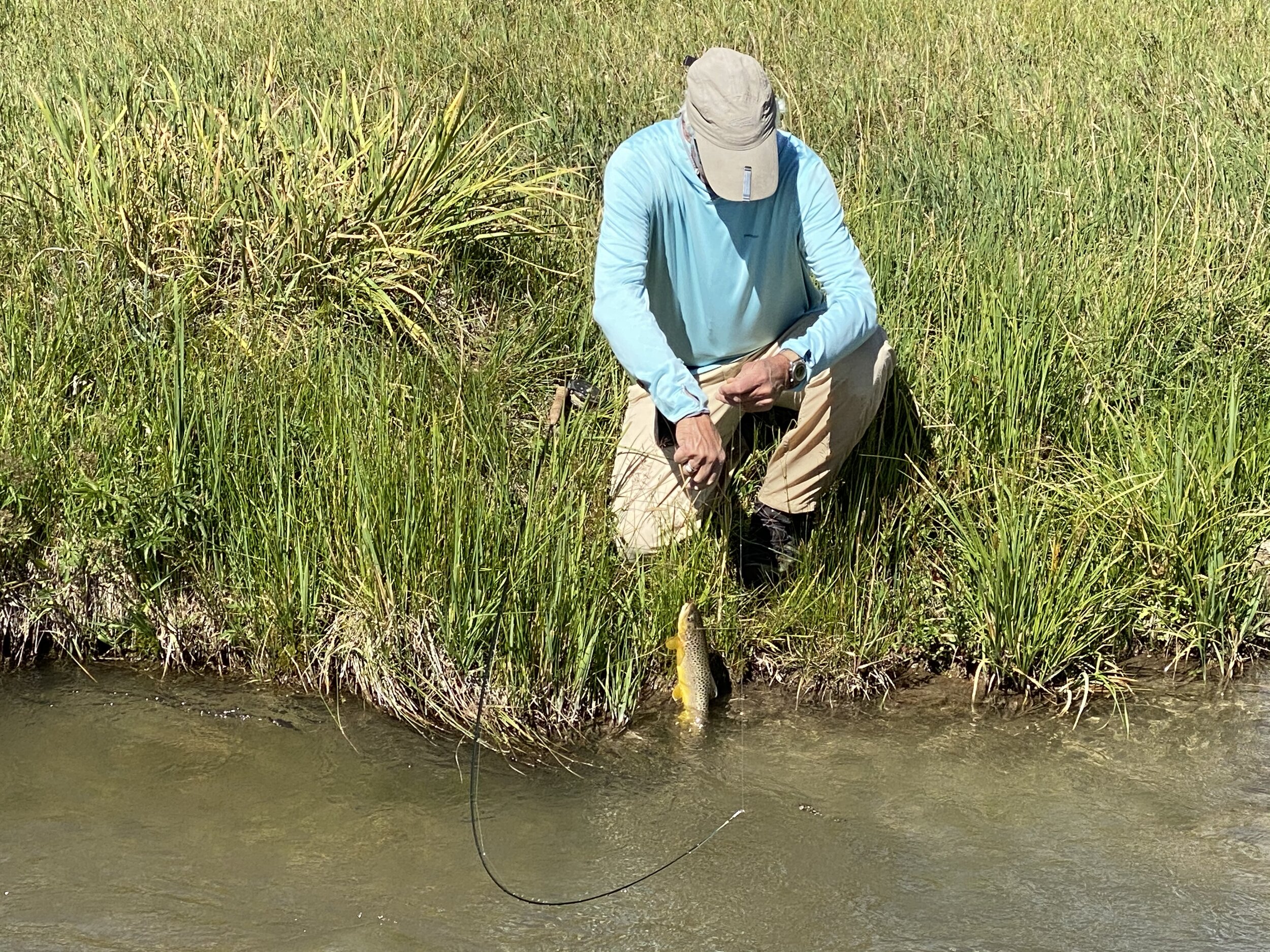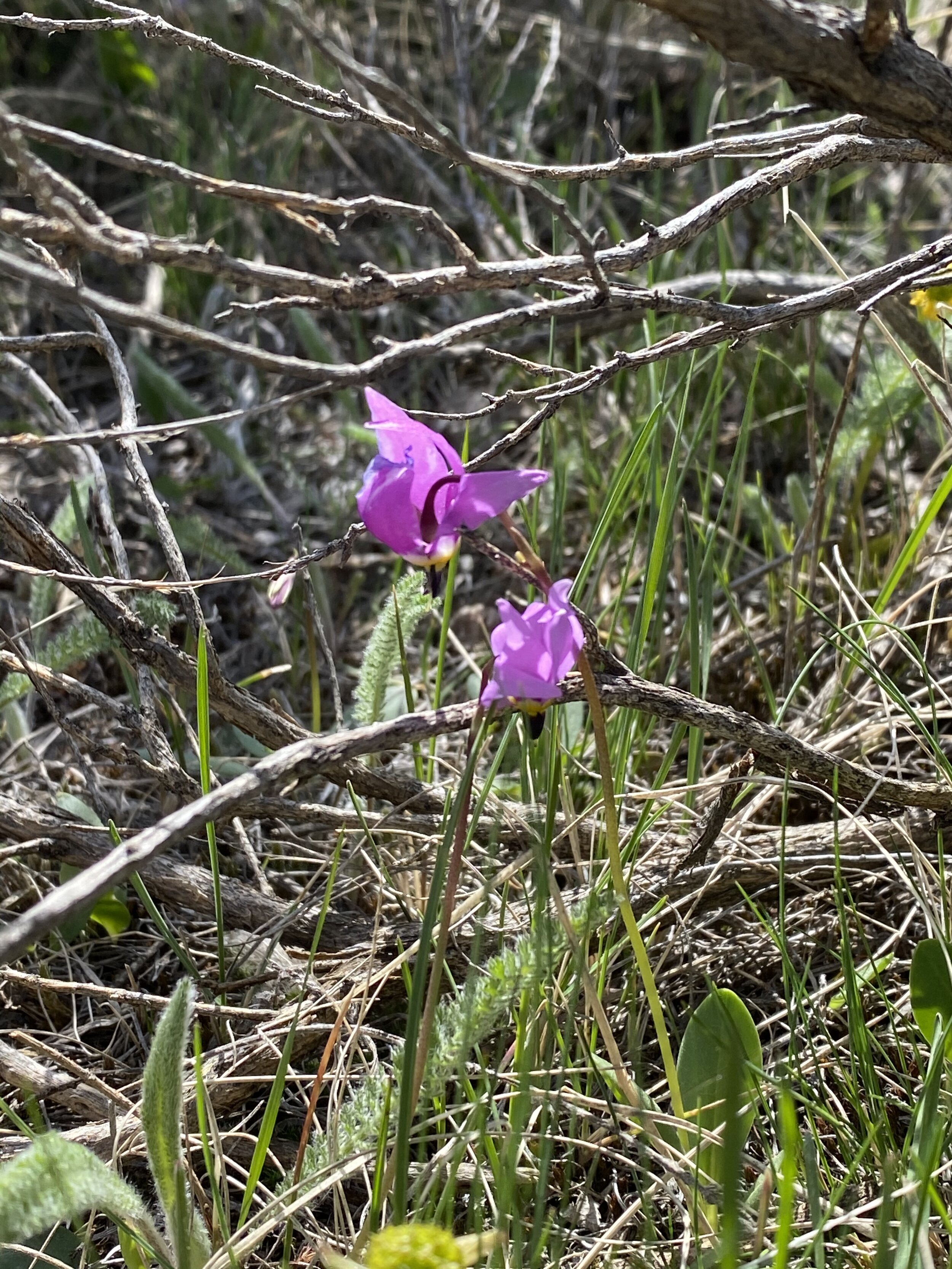We’ve had an action-packed week in Yellowstone country. It began early Tuesday morning when our resident moose, Bullwinkle, decided to wage war on Jackie’s birdbath.
An hour later Yvon and I were on the water where he started out winning a battle with a gorgeous hooked jaw male brown trout he took on one of his famous soft hackles fishing it on his favorite bamboo rod, one the master Leon Hanson from Michigan crafted for him.
Yvon releases a nice brown trout.
The following day I had the pleasure of fishing a few hours with the new US Ambassador to Japan and his wife. Both caught fine trout on caddis patterns and promised to return soon, for a full day on the river.
New US Ambassador to Japan takes a nice Madison rainbow on X Caddis.
Most evenings Terry and I fished emerging caddis activity. You will see Terry sitting on the bank watching a big brown trout rising to emerging caddis pupae. A X Caddis Tan #16-18 and an amber Iris of the same sizes are the only caddis patterns needed for success. As with all our flies, they are easy to tie, highly visible and durable and fool lots of big trout.
Heads up! Here’s a large brown trout rising to emerging Caddis.
Today we arrived on the river early to find rising like wolves to Pink Lady mayfly spinners. I knotted on my new foam-hackle spinners and began taking several nice browns and rainbows until they abruptly quit rising. A short time later we noticed they’d moved into the soft-frog water along the shoreline and were feeding on #24 emerging midges. Adding a long pull of 6x tippet and knotting on a #24 Zelon Midge proved deadly on these rising fish, for half-hour until they quit rising.
We did not sit on the bank long before fish began feeding on emerging caddis, their explosive rises giving us the clue to switch to patterns like our Tan X and Iris Caddis, tied with sparkling-trailing shucks that imitate impaired emerging adults stuck in their shucks, and recognized by big fish as easy prey. We took several nice trout until the rise-forms changed, again. Now the large fish sipped casually, moving slowly to take PMD Duns drifting in the seams and behind boulders along the shore. A switch to #18 PMD Sparkle Duns was all that was needed to fool most sippers.
Eperorous spinners bring up big trout during morning spinner falls on Madison.





